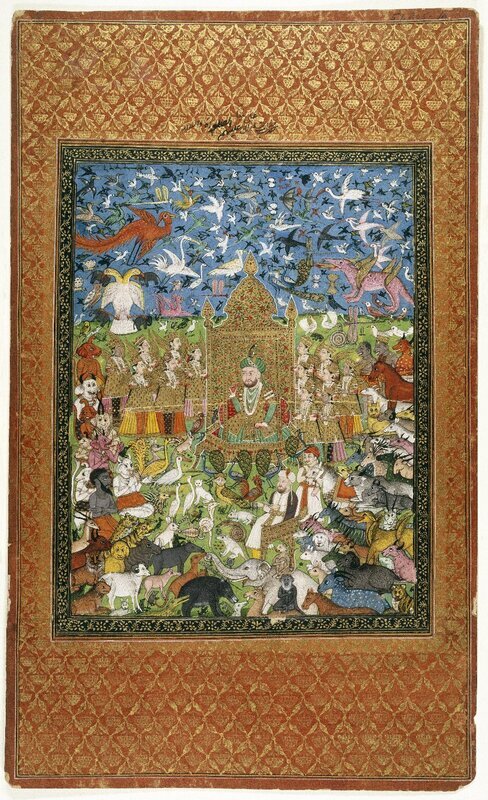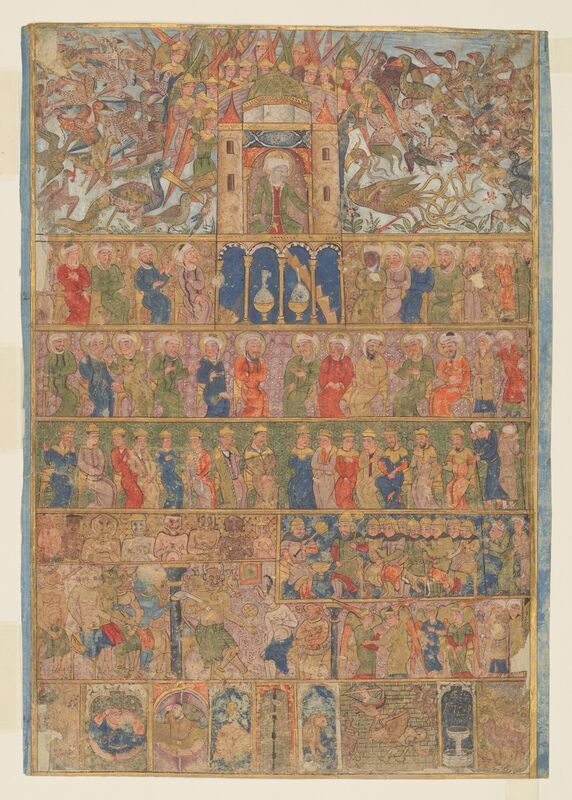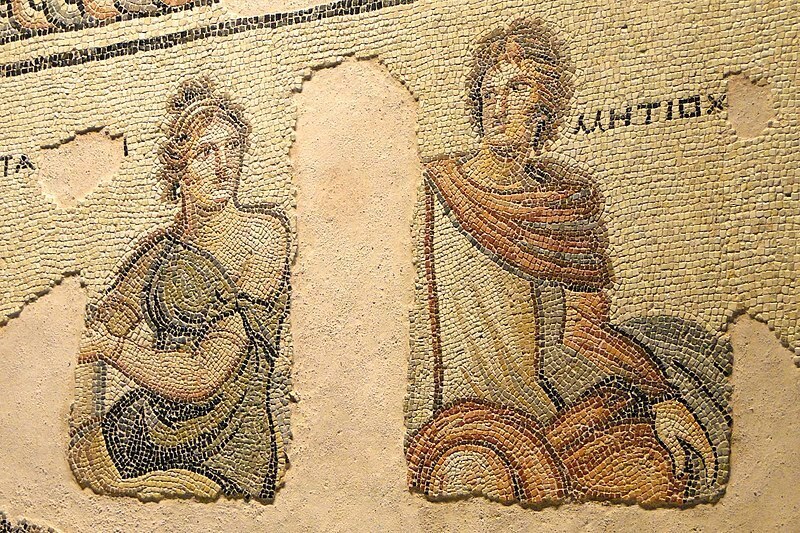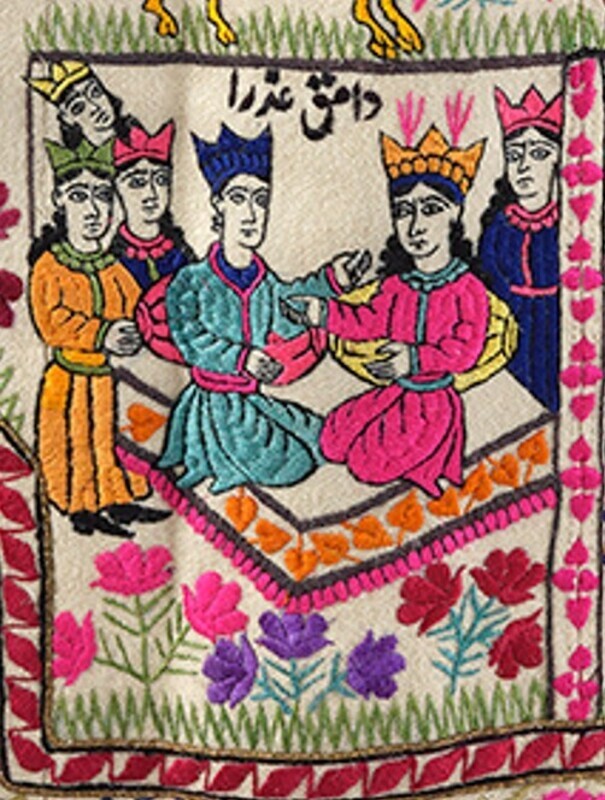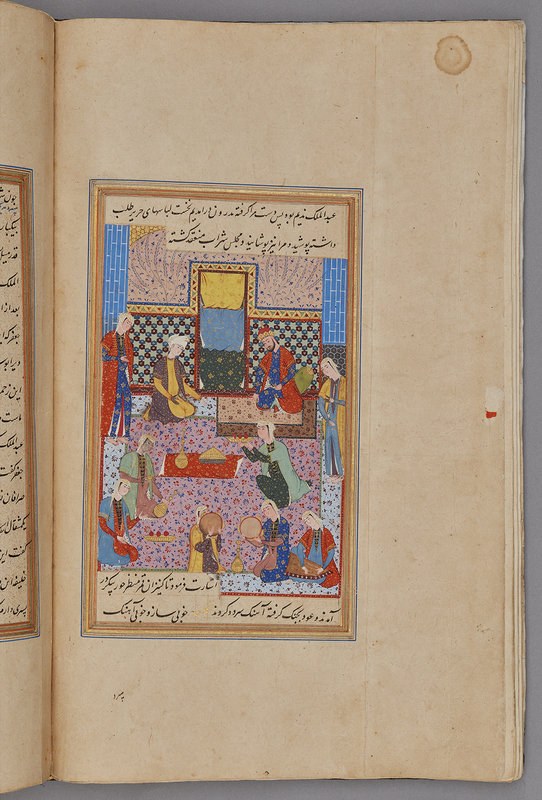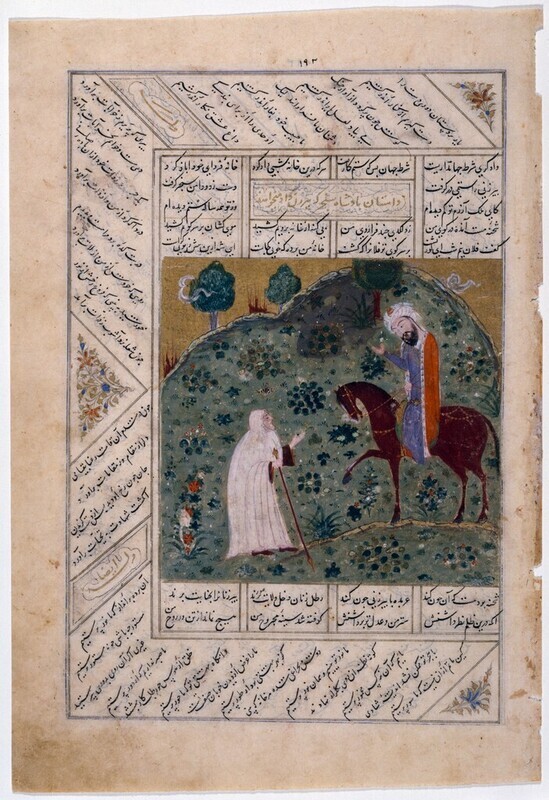The Robe as a Storybook
Contents: Prophet Sulaiman / King Solomon | Vamiq and Azra | Haroun al-Rashid and the ‘House of Wisdom' | Sultan Sanjar and the Old Woman
The Robe as a Storybook
High-ranking officials in Islamic ruling territories were sometimes awarded with an embroidered armband that displayed Arabic inscriptions to provide blessings on the wearer. These textiles were called Tiraz. Textiles and clothing are often illustrative of the wearer’s allegiance, as well as their political or societal standing. The origins of the AKM robe are unknown and consequently, its purposes for why it was worn or who might have worn it, is also hidden. Perhaps, the symbolic traits of the Tiraz can be applied to this study of the robe to be understood as both an object of aesthetics as well as metaphorical and symbolic values. In doing so, this metaphorical approach tackles the question of why all four stories are depicted on a singular robe, and further, what its intended meaning was for either the maker or wearer of the robe. In this, I use the function of the Tiraz in relation to the AKM robe, and argue that perhaps, the robe uses its four stories in a similar fashion to the inscriptions on the Tiraz, where each story invokes a blessing and a lesson for its wearer.
Examining the Lessons of the Four Tales
Prophet Sulaiman / King Solomon
King Solomon ruled from his throne in Jerusalem and was a person who is detailed in Judaic, Islamic and Christian scriptures to have been blessed with infinite wisdom by God. The reference to the story in a Central Asian robe serves as an indicator of religious ideologies like Judaic, Islamic and Christian teachings were also spread across the Silk Roads.
Vamiq and Azra
The story of the Virgin and Her Lover spans a thousand year period, beginning in the 1st Century BC where the virgin princess, Parthenope, and Metiochus fall in love but the virgin vows to keep her virtue and chooses death over a life with Metiochus. In the Persian retelling a thousand years later, Vamiq and Adhra meet under similar circumstances however, Adhra’s infatuation with Vamiq leads her to meet him unaccompanied, and is caught by her father who banishes to life in a convent for bringing shame upon their family. The journey of this particular story poses larger questions of how tales and mythological stories might have crossed Europe and the Mediterranean through the pilgrims, travelers, merchants and visitors to the silk roads.
Haroun al-Rashid and the ‘House of Wisdom’
Haroun al-Rashid ruled as the Caliph of Baghdad in present-day Iraq. (Subramaniam, p.210). The Aga Khan Museum labels the illustrated scene as a depiction of the Caliph’s encounter with Charlemagne of the Franks. While no Arabic texts hold a record of this encounter, all accounts of their allyship derive from Western sources where the Caliph was praised as a wealthy, revered foreign leader. The depiction of this story then indicates that stories spread along the Silk Roads, highlighting even foreign stories and people living beyond the Silk Roads.
Sultan Sanjar and the Old Woman
The Baysunghur Manuscript, a later copy of the Shahnameh, was commissioned by Timurid Prince Baysunghur Mirza who ruled in Herat Afghanistan. This illuminated manuscript depicts the legendary scene of Sultan Sanjar, the ruler of the Khorasan Province of Iran who is humbled by and given wise lesson from an old lady.
